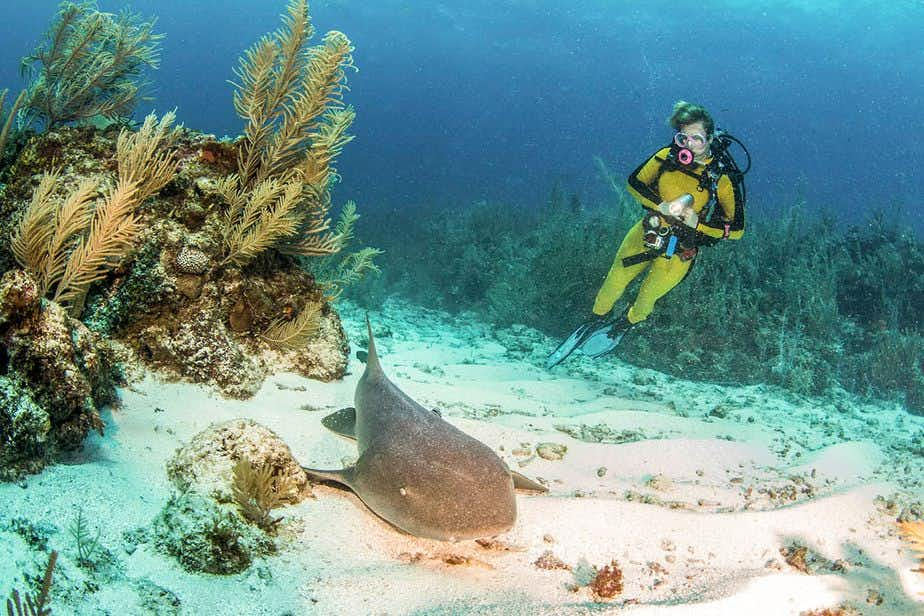Login
No account yet?
Create Account
Belize Barrier Reef
Discover the underwater paradise of Belize
3 travellers have this on their Bucket List
0 been here
The Belize Barrier Reef is Belize's crown jewel. This vast coral reef is simply beautiful, with crystal clear waters and an incredibly rich marine life. You can visit it on different tours or on you own.
The reef comprises around 450 mangrove islands, bays and atolls. These circular coral islands used to surround volcanoes, which disappeared into the ocean, leaving behind a ring-shaped reef, with a lagoon in the middle. The lagoons can also contain sandbanks.
The Belize Barrier Reef is the second largest barrier reef in the world, and is located off the coast of Belize. You can spot around 350 species of fish. It's also home to several different kinds of endangered animals such as turtles and dugongs.
Snorkelling and diving in the Belize Barrier Reef
This World Heritage Listed coral reef is one of the world’s best snorkel and diving spots in the world. Its position in the warm waters of the Caribbean Sea ensures the area is very rich in species of both corals and everything that swims around it.
The second largest coral reef in the world
After the Great Barrier Reef in Australia, it is the longest coral reef in the world. But for comparison, the Great Barrier Reef is around 3.200 kilometres long… so that’s then times longer.
History of the Belize Barrier Reef
Research has shown that, once upon a time, the entire reef was part of the mainland. Belize is located on the line where two tectonic plates meet: the North American plate and the Caribbean plate. The latter is slowly moving to the east, sinking complete masses of land into the ocean.
The famous Blue Hole is an example of that, and it’s actually a cave, with its customary stalactites and stalagmites. After the large cave came to be under water, the roof collapsed under the pressure of the water, that’s how a ‘hole in the ocean’ occurs. This hole is about 300 meter wide and 130 meter deep.
More than 100 different types of coral
The reef contains around 65 kinds of hard coral and 35 kinds of soft coral. And coral is made up of millions of coral creatures, known as polyps. They live inside a skeleton (a calicle) of calcium carbonate, and live off plankton, grabbing it with their tentacles as it floats past.
Polyps have a very intimate relationship with the zooxanthellae algae, which it hosts inside its calicle. The algae use photosynthesis to absorb calcium from the eater, allowing the calicle to grow, in return the calicle offers the algae a safe place to grow.
When polyps die, they form the base for more polyps to grow on, and that’s how coral reefs grown over the centuries. The reef slowly sinks into the seabed thanks to the weight of the coral, ensuring the coral can keep growing and stay under the water level.
On the Belize Barrier Reef you can see all forms and stages of coral, from thousands of years old, to that which is only just beginning to form. The reef attracts all sorts of animals, which each have their own favourite area of reef to live near or in.
Nurseries for numerous species
Mangrove forests are an ideal nursery for lots of animals, including many fish. You can see young barracudas swimming near the surface of the water, but also sea stars, shellfish, lots of crabs, jellyfish, snails and sponges.
The coast of Belize has four kinds of mangroves: the red mangrove which is the most common and then the black mangrove, the white mangrove, and the buttonwood.
Most divers and snorkelers come for the many fish, the coral and the other animals, not to see one specific creature. However, interest in whale sharks, dugongs and sea turtles has increased a lot, and if you plan it well, you’re like to see them on your trip.
For example, seagrass is a favourite food of goose barnacles, and lots of other crustaceans, but also crabs, anemones, sea horses, sponges, sea stars and loaches.
Best time for Belize Barrier Reef
The wet season starts in May and ends in November, so the best time to visit is from December to March. Belize is located in an area with hurricanes, so violent storms can pass through in September and October, that can have devastating effects.
3 travellers have this on their Bucket List
0 been here


